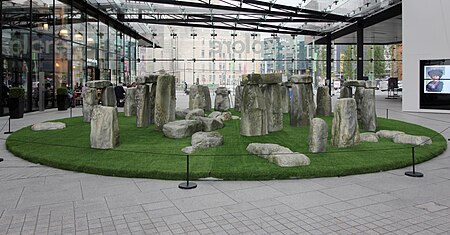Open Eye Gallery
1977 establishments in EnglandArt galleries established in 1977Art museums and galleries in MerseysideEngvarB from September 2019Photo archives in the United Kingdom ... and 2 more
Photography museums and galleries in EnglandTourist attractions in Liverpool

Open Eye Gallery is a photography gallery and archive in Liverpool, UK that was established in 1977. It is housed in a purpose-built building on the waterfront at Mann Island, its fourth location. Open Eye Gallery comprises an exhibition space on one floor and an archive space on another, and has large-scale graphic art installations on its external facade. It is the only gallery dedicated to photography and related media in North West England. It is a non-profit organisation and a registered charity.
Excerpt from the Wikipedia article Open Eye Gallery (License: CC BY-SA 3.0, Authors, Images).Open Eye Gallery
Mann Island, Liverpool Ropewalks
Geographical coordinates (GPS) Address Nearby Places Show on map
Geographical coordinates (GPS)
| Latitude | Longitude |
|---|---|
| N 53.4037 ° | E -2.9936 ° |
Address
Longitude Building
Mann Island
L3 1BW Liverpool, Ropewalks
England, United Kingdom
Open on Google Maps






